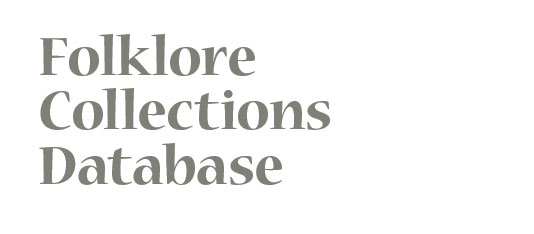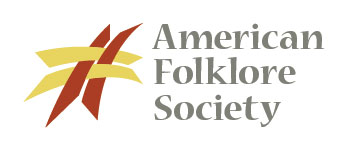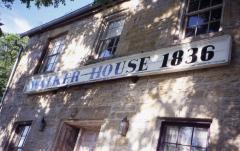

Folklore Village Farm Director Doug Miller initiated a project in 1998 to prepare a photo-text exhibit representing the folk traditions of the Southwestern Wisconsin region where the organization resides. Independent folklorist Janet C. Gilmore helped Miller obtain Wisconsin Humanities Council grants to canvass existing documentary resources and then develop an exhibit based upon them. While she was engaged in developing the second phase in 1999, Professor James P. Leary offered to teach a summer field school in 2000 that could supplement documentation for the project, offer important match for the second Wisconsin Humanities Council grant, and give motivated students opportunities to focus on in-depth fieldwork projects that would lead to a public production and provide experience for future public folklore work. With funds from a Chancellor's Teaching Enhancement Grant and Kemper K. Knapp Bequest through the University of Wisconsin-Madison, Leary furnished fieldwork supplies and equipment and supported student travel expenses.
During June-July 2000, ten students participated in the four-week Folklore 639 course offered through the Folklore Program at the University of Wisconsin-Madison. Leary trained them in fieldwork techniques, Gilmore counseled students about potential projects and contacts, and each student chose a topic and proceeded with the research, using documentary guidelines developed by Gilmore for the Wisconsin Sesquicentennial Celebration Folklife surveys, 1996-98. Each student conducted and recorded interviews, made photographic images, compiled a final fieldwork report, and prepared tape, slide, and photo logs, besides obtaining releases from those interviewed, using the electronic documentation form templates provided. As the course reached its end, on July 6, 2000, students, professor and advisors, Folklore Village staff, and people interviewed convened for a festive evening at Folklore Village where the students gave slide presentations of their work and offered samples of foods documented during their fieldwork.
University of Wisconsin-Madison Professor James P. Leary, then Chair of the Folklore Program, taught the Folklore 639 Field School course and obtained funding from UW-Madison to support fieldwork equipment, supplies, and expenses for the students. Doug Miller, Executive Director of Folklore Village Farm near Dodgeville, Wisconsin, accommodated students with lodging at the site during the fieldwork phase, and with the main performance hall at the end, when students presented their projects to an audience that included people they had documented during their fieldwork. Folklorist Janet C. Gilmore, who was working under Wisconsin Humanities Council funding to help Folklore Village develop an exhibit on Southwestern Wisconsin folklife, helped students identify project topics and obtain contact information for interviewees. The student fieldworkers included Theresa Brandl, Katy Holmer, Angela Horn, Rebecca Kavanagh, Paulette Marty, Margaret McEntire, Amy Nord, Tina Schinabeck, Hayet Sellami, and Ayako Yoshimura. Jim Leary also shot some color slides related to the project's focus during this period.
Altogether the students formally interviewed over 23 people, with nine fieldworkers submitting their documentation to the Folklore Program in fulfillment of their course requirements. This documentation forms the foundation of this collection, and covers an array of subject matter ranging from commercial fishing, fish marketing, fish foodways, hunting, and duck decoy carving, to stone building, religious shrine building and gardening, Italian-American foodways and gardening, wild food gathering, herb gardening and medicine, Hmong needlework and herbalism, rosemaling, ethnic identity at a Japanese market, and supernatural tales of the Ridgeway Ghost and other spirits. See below for further information. The collection does not include documentation from Amy Nord, who researched julebukking.
The material is organized by document type and thereunder alphabetically by fieldworker.
Theresa Brandl interviewed Kris Willfahrt, groundskeeper of the Grotto Gardens in Rudolph, Wood County, Wisconsin.
Katy Holmer interviewed Ron and Kathy Mootz about stone structures including the Primitive Methodist Church, a residence, a miner's cabin in Jenkynsville, Wisconsin, and a residence in Shullsburg, Wisconsin, owned by the Lead Region Historic Trust, and Mina Mauthe, a granddaughter of James Lindsay who worked as a stone mason on the church.
Angela Horn interviewed the late Pascalena Galle Dahl's daughter Vicki Dahl about canning and gardening; Pascalena's son Chuck Dahl about sausage-making and farming; Pascalena's sister Nelli Galle Nardi about canning, gardening, and changing foodways; and Nelli's husband Joe Nardi about wine making.
Rebecca Kavanagh interviewed Mike Valley, Prairie du Chien, about commercial fishing, his fish market, fish smoking, hunting, and woodcarvings, including waterfowl decoys.
Paulette Marty interviewed Helga Kammerud Moen of Argyle, Wisconsin, who told stories about the Ridgeway Ghost and other supernatural specters and phenomena she has experienced throughout her life. Jeannie Lewis and Melva Phillips shared several stories concerning the ghost, both historical and recent.
Margaret McEntire interviewed David Milbradt, who grows and gathers herbs; Francisco Dremsa, who grows herbs, collects berries, ginseng, and morel mushrooms, keeps bees, and gathers watercress; Virgil Anderson, gatherer of nuts, berries, and morels; and Dennis Pechan, morel gatherer and maker of maple syrup.
Tina Schinabeck interviewed Lois Mueller of Platteville, a Gold Medal rosemaler. She also photographed pieces rosemaled by Gold Medalist Susan Louthain of Platteville.
Hayet Sellami interviewed Kaonou Hang, a second-generation Hmong immigrant and student at UW-Madison, about her family history, Hmong culture, and needlework. May Thao served as translator for Sia Vue Thao who told about herbal medicines. Blia Lor Yang shared her knowledge of Hmong embroidery and needlework.
Ayako Yoshimura interviewed Tamaki and Kuang Wu, owners of the Oriental Shop, an Asian grocery in Madison. She also interviewed long-time customer Atie Prastowo.
Legends of the Supernatural in Southwestern Wisconsin Project Collection (CSUMC0002-CG), NFAI.O.00000011
Family Farm Program interviews with members of the extended Galle-Dahl family, Festival of American Folklife, Smithsonian Institution, 1991
University of Wisconsin Folklore Program Student Files
Rosemaling in the Upper Midwest Collection (CSUMC0004-CG)
River Harvest Project Collection (CSUMC0017-CG)
This documentation was created with the intent that it would be stored and archived by the University of Wisconsin-Madison Folklore Program, and made available for such uses as Folklore Village Farm's proposed photo-text exhibit.
Each student submitted her original fieldwork documentary materials in an individual storage envelope. Lyndi Sue J. Finifrock assigned an individual archival folder to each student's project materials, moved project materials from envelope to folder, labeled the folder by topic, and arranged the folders alphabetically in an archival storage box in October 2003 in the Folklore Program collections storage area. All color slides were moved to archival slide sheets and arranged alphabetically by researcher's name in two separate slide notebooks.
Listening and viewing access to the collection is unrestricted, by appointment only.
UW-Madison Folklore Program
Prof. James P. Leary
2315 Sterling Hall
475 N. Charter Street
Madison, WI 53706
Email: jpleary@wisc.edu
Phone: (608) 262-8107
Web site: http://folklore.wisc.edu
Duplication of the materials for non-profit personal, educational, and research purposes within the scope of the Folklore Program's jurisdiction may be arranged. Duplication of materials for public presentation, publication, and production requires negotiation with the Program Director, the fieldworkers, and the people documented.
|
|
